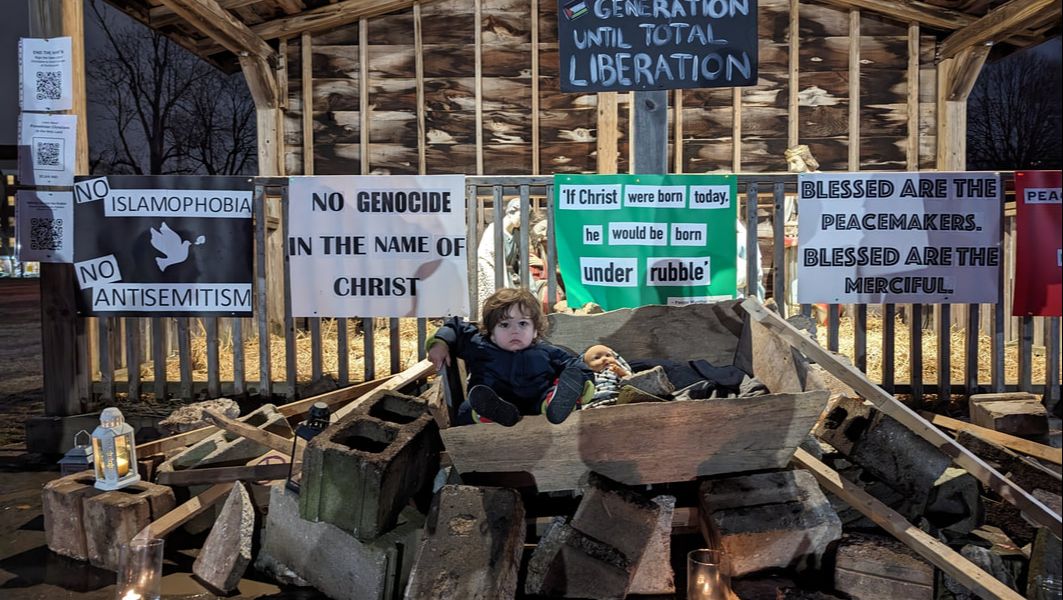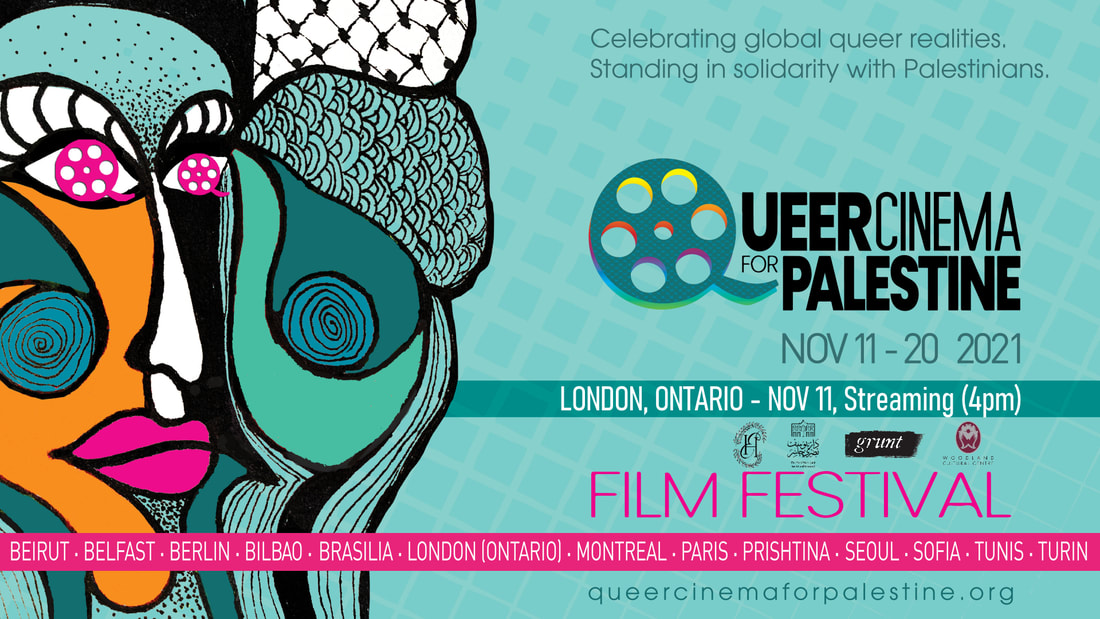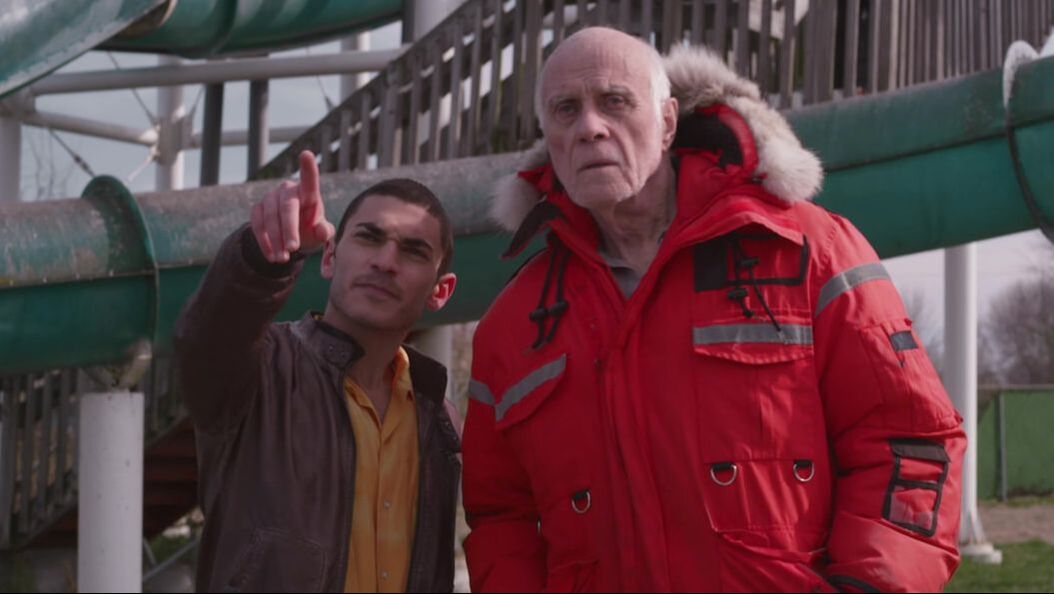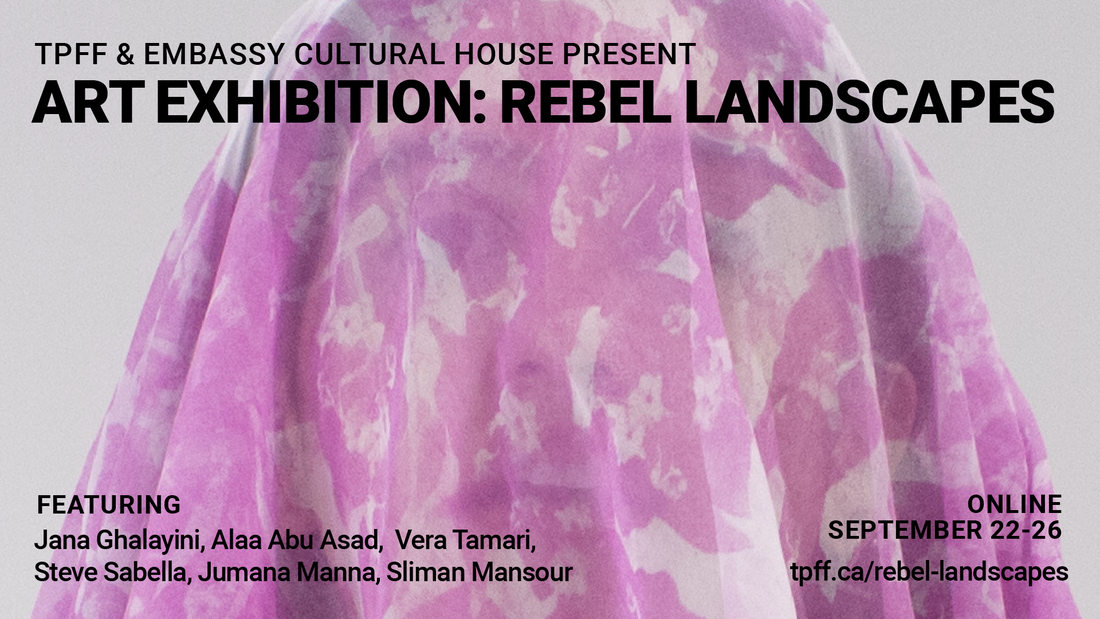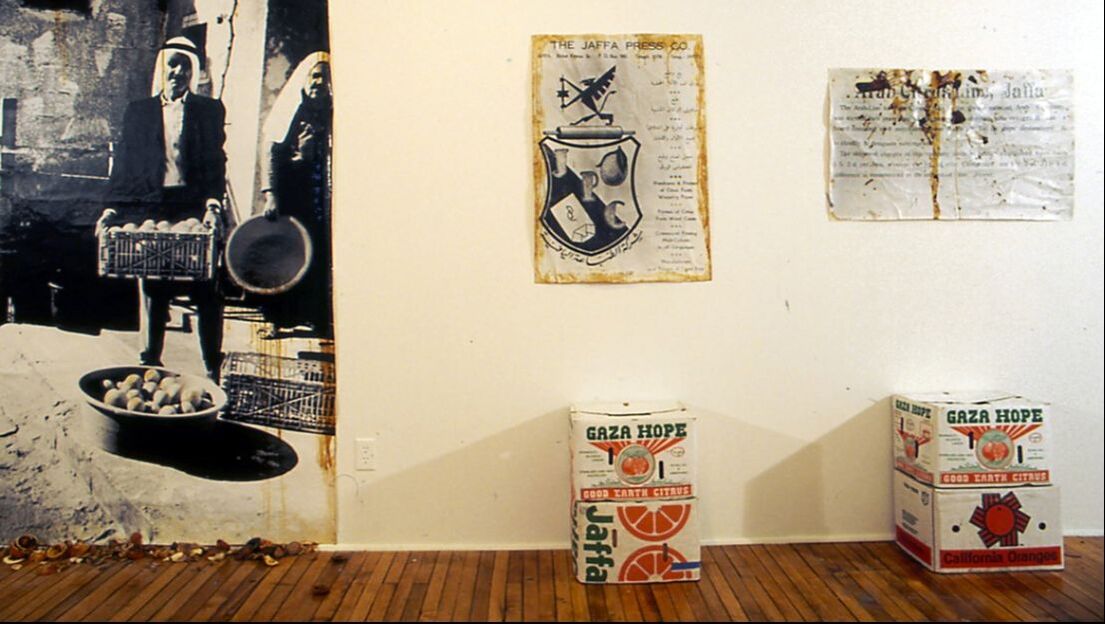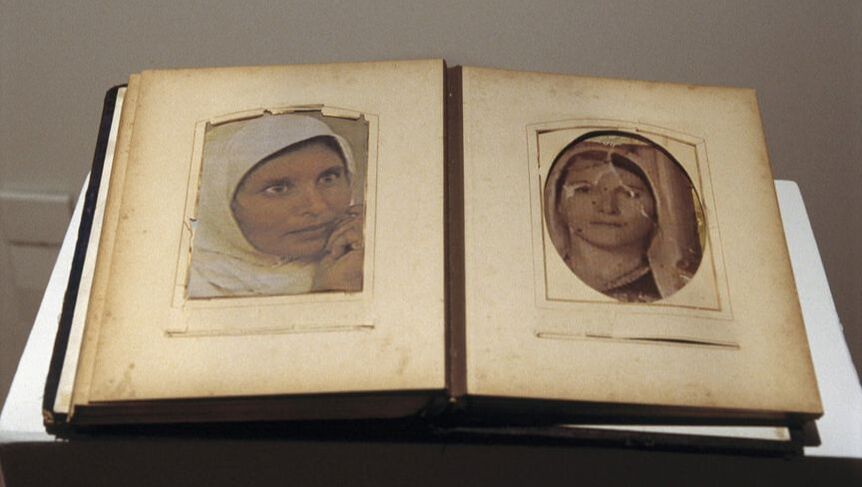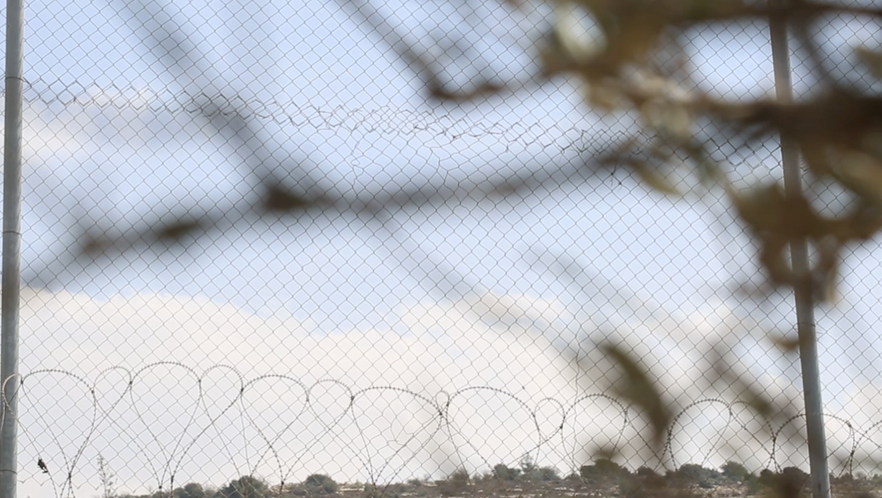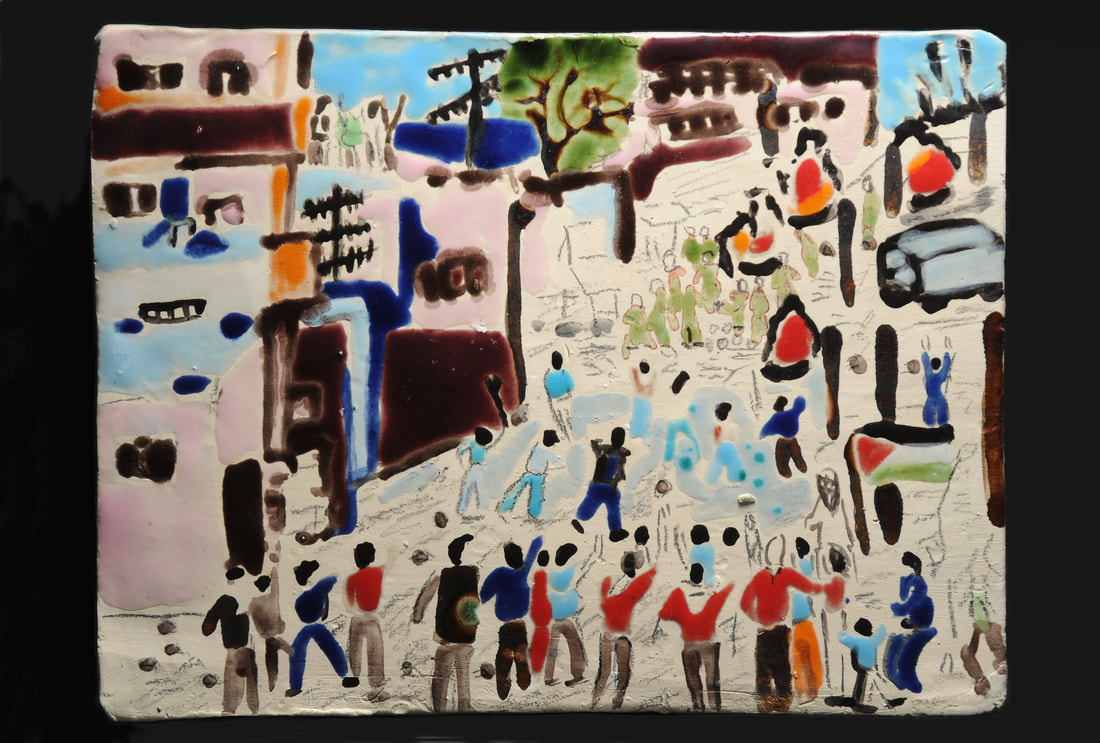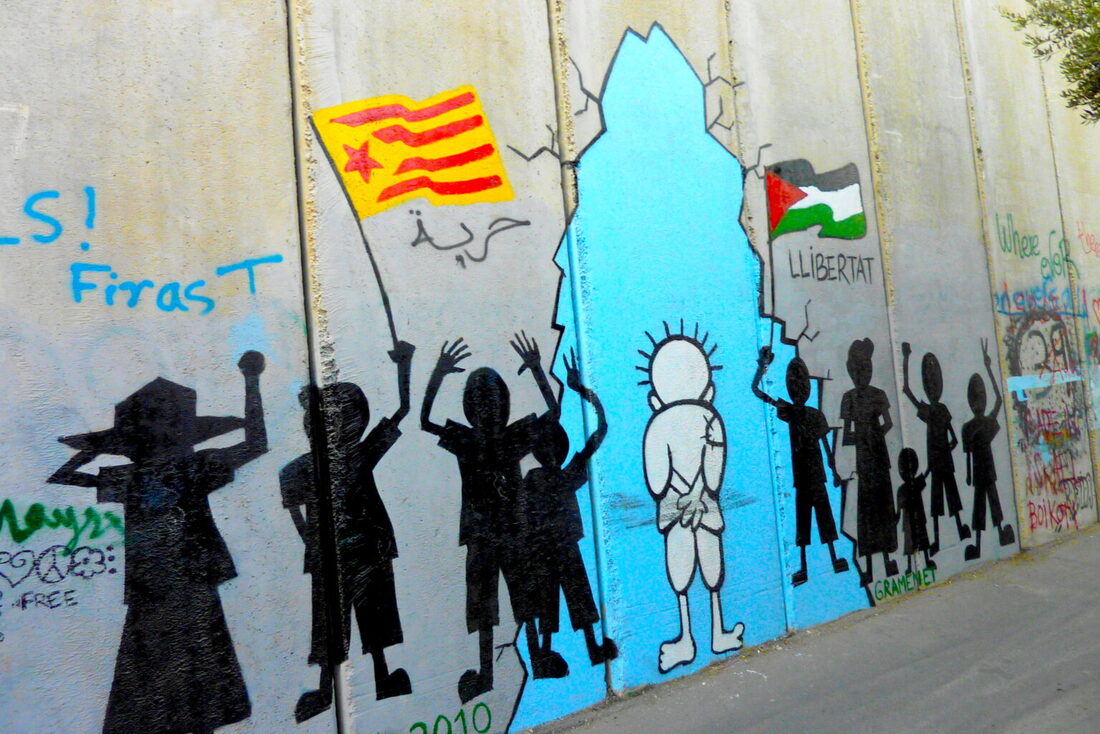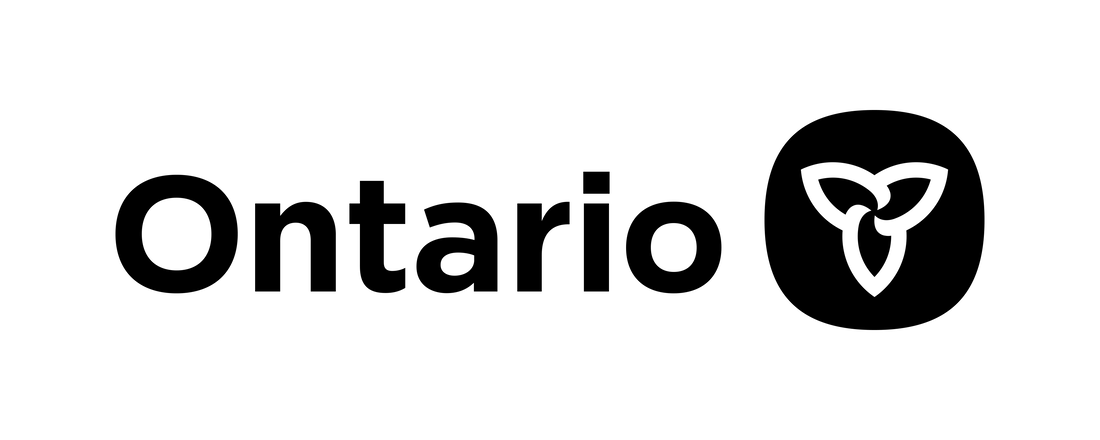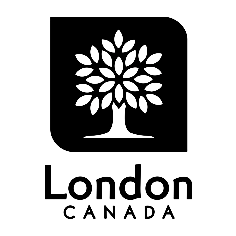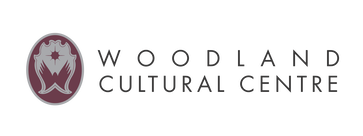THE STATE OF PALESTINE
PROJECTS ON PALESTINE
WORKS ON PALESTINE
ALBERTO GOMEZ & DOT TUER
A short statement written by Alberto Gomez in response to the IDF raid on the Dar Yusuf Nasri Jacir Centre for Art and Research in 2021 and in solidarity with the anti-colonial struggles of the Palestine people. English translation by Dot Tuer.
|
Palestina, siempre fue para los latinoamericanos, memoria emblemática.
Nunca olvidaré cuando en la cárcel, como prisionero político de la dictadura militar de Argentina, en una visita de la Cruz Roja Internacional, le mencioné al delegado nuestras condiciones de aislamiento y tortura por parte del régimen militar, y el me respondió que estuvo recientemente en el medio oriente y que la situación de los prisioneros palestinos en prisiones israelíes, eran peores que las nuestras. No pude imaginarme que mas crueldad había contra seres humanos, que luchaban por su liberación. Regresé al pabellón a informarle a mis compañeros de la conversación con el organismo internacional, y su repuesta. Nos quedamos en silencio, conmovidos, por semejante comentarios; cuando a nosotros nos sacaban de nuestras celdas, nos torturaban y mataban. Pasábamos años aislados sin visitas de nuestros familiares, con las celadas vacías, sin nada, sin libros, sin cartas, sin alimentos, solo un plato para la comida y un jarro para el agua y 24 horas de encierro sin luz natural. ¿Que mas había para torturar a un prisionero político? Quedamos impactados y pensamos mucho en nuestros hermanos et hermanas palestinos como estarían pasando. Hoy 40 años después, aun hay mas de 5000 prisioneros palestinos, algunos de ellos seguramente desde esos tiempos y continuando su lucha libertaria. Fue en el marco de la guerra fría, cuando los movimientos de liberación nacional latinoamericanos reconocieron la causa palestina, e inmediatamente estrecharon vínculos como parte de esos procesos de descolonización. Hoy la causa Palestina sigue vigente y las demostraciones de solidaridad con el pueblo palestino, jamás fue olvidada. Siempre, en todas manifestaciones masivas en Latinoamérica se verá una bandera, negra, blanca, verde y un triangulo rojo: la bandera de los palestinos, con nosotros. ALBERTO A GOMEZ Ateneo Liberación, Corrientes, Argentina https://www.revistaliberacion.com.ar |
Palestine for Latin Americans was always an emblematic memory.
I will never forget while in prison – it was 1978 and I was a political prisoner during the military dictatorship in Argentina – of speaking to a delegate from the International Red Cross about our inhumane conditions of isolation and torture and the delegate responding that he had recently been in the Middle East and that the situation of Palestinian prisoners in Israeli prisons was much worse than ours. I could not imagine that there was even more cruelty against fellow human beings who were fighting for their liberation. I returned to my pavilion to inform my compañeros of what the delegate from the Red Cross had said. We were shocked and silenced by his comments. The military acted with such impunity in Argentina. They took us from our cells, they tortured and killed us. We had spent years isolated, without visits from our relatives, in empty cells, with nothing, no books, no letters, only a plate for food and a jug for water, confined 24 hours a day without natural light. What more could be done to torture a political prisoner? We were deeply affected by how our Palestinian brothers and sisters were suffering. Today, 44 years later, there are more than 5000 Palestinian prisoners being held in Israeli jails, some of them probably from that time, who continue their struggle for liberation. It was in the context of the Cold War that Latin American national liberation movements made common cause with Palestine’s right to self-determination and strengthened ties with Palestinian people to support their anti-colonial struggle. Today demonstrations of solidarity with the Palestinian people and their struggle for liberation continue to take place across Latin America. Their injustices have never been forgotten. And always, in all the demonstrations in Latin America for people’s rights – in Colombia, in Chile, in Argentina – you will see a flag, black, white, green and a red triangle, the flag of the Palestinians, among us and with us. ALBERTO A GOMEZ Ateneo Liberación, Corrientes, Argentina https://www.revistaliberacion.com.ar |
JAMELIE HASSAN
In the summer of 1990, I travelled to Palestine at the invitation of two Palestinian women activists, Assia Habash (1936-2016) in Jerusalem and Jacquline Sfeir (1956-2013), in Bethlehem who had brought the exhibition Faithful Witness to the Embassy Cultural House. This was a collection of artworks created by Palestinian children in response to the Israeli occupation and documenting the first Intifada. The ECH's 1989 exhibition was done in collaboration with The Near East Cultural & Educational Foundation, Toronto. After attending the hunger strike by the Palestinian leadership which included Hanan Ashrawi (1946-) and Faisal Husseini (1940-2001) at the Red Cross Garden in Jerusalem, I joined with a team of Doctors without Borders to travel to Gaza. There, I was able to visit the work of one of the young artists, Salwa el Sawahly, from Rafah Refugee Camp whose paintings documented every aspect of the Intifada. The tiles which I created were inspired by these images and were part of an installation titled Palestine's Children, 1990-1991.
MIREYA FOLCH-SERRA
On the Apartheid Wall surrounding the city of Bethlehem, a mural with the 5-pointed star flag of the Catalan independent movement, the estelada, appears near Handala, the symbol of Palestinian resistance surrounded by blue. Under the Palestinian flag is the word "llibertat", freedom in Catalan. The flags and Handala are surrounded by young figures raising their hands with signs of hope and defiance that represent the aspirations of both peoples: Palestinians and Catalans. The mural is signed with the name of an ancient village located in the Catalan Pyrenees: Gramenet.
